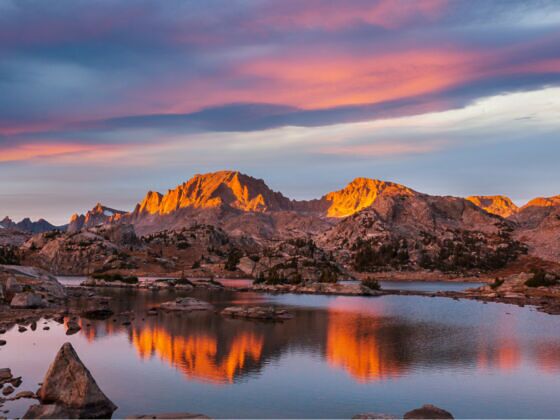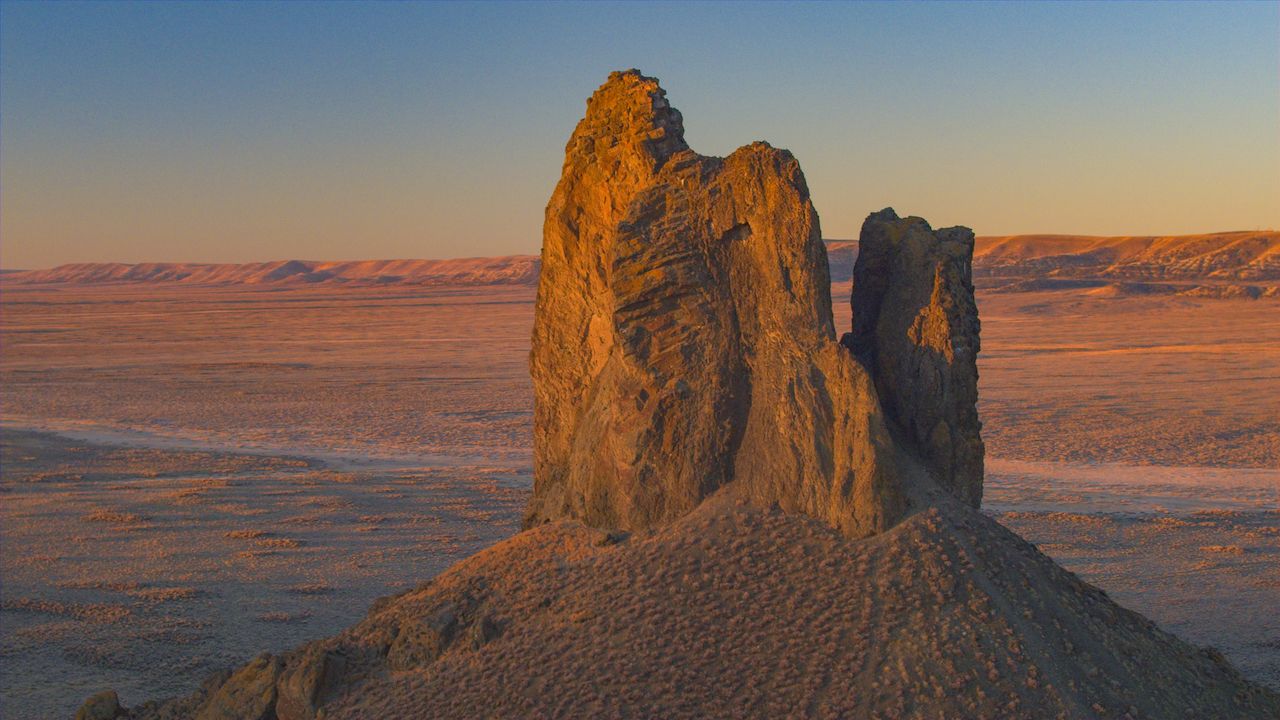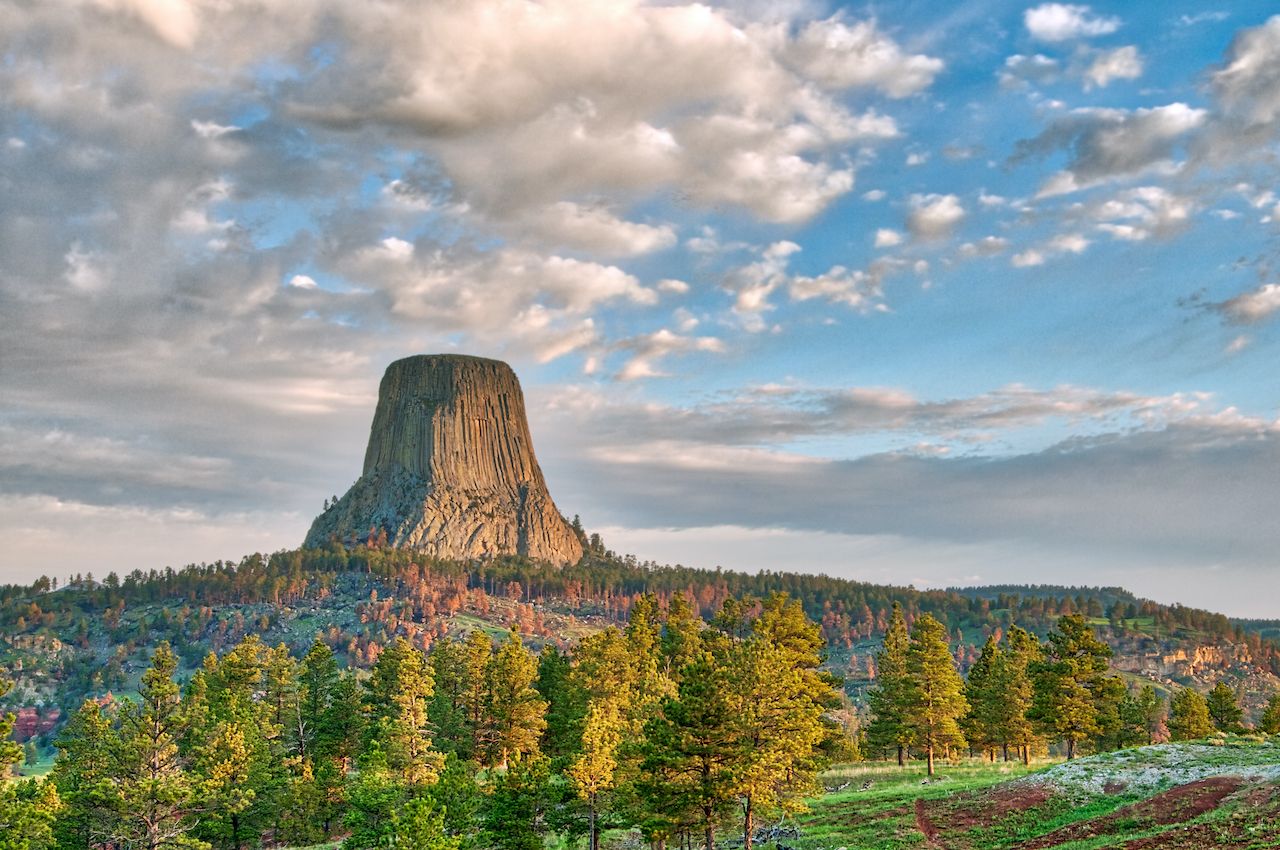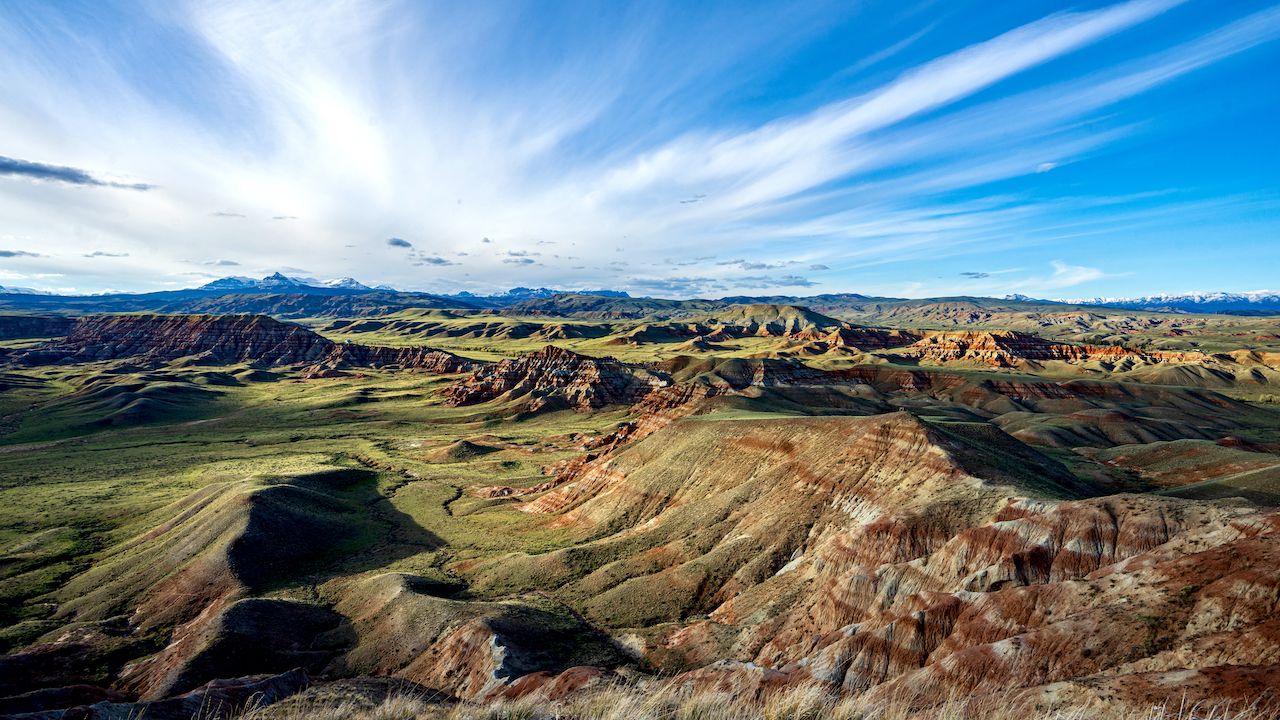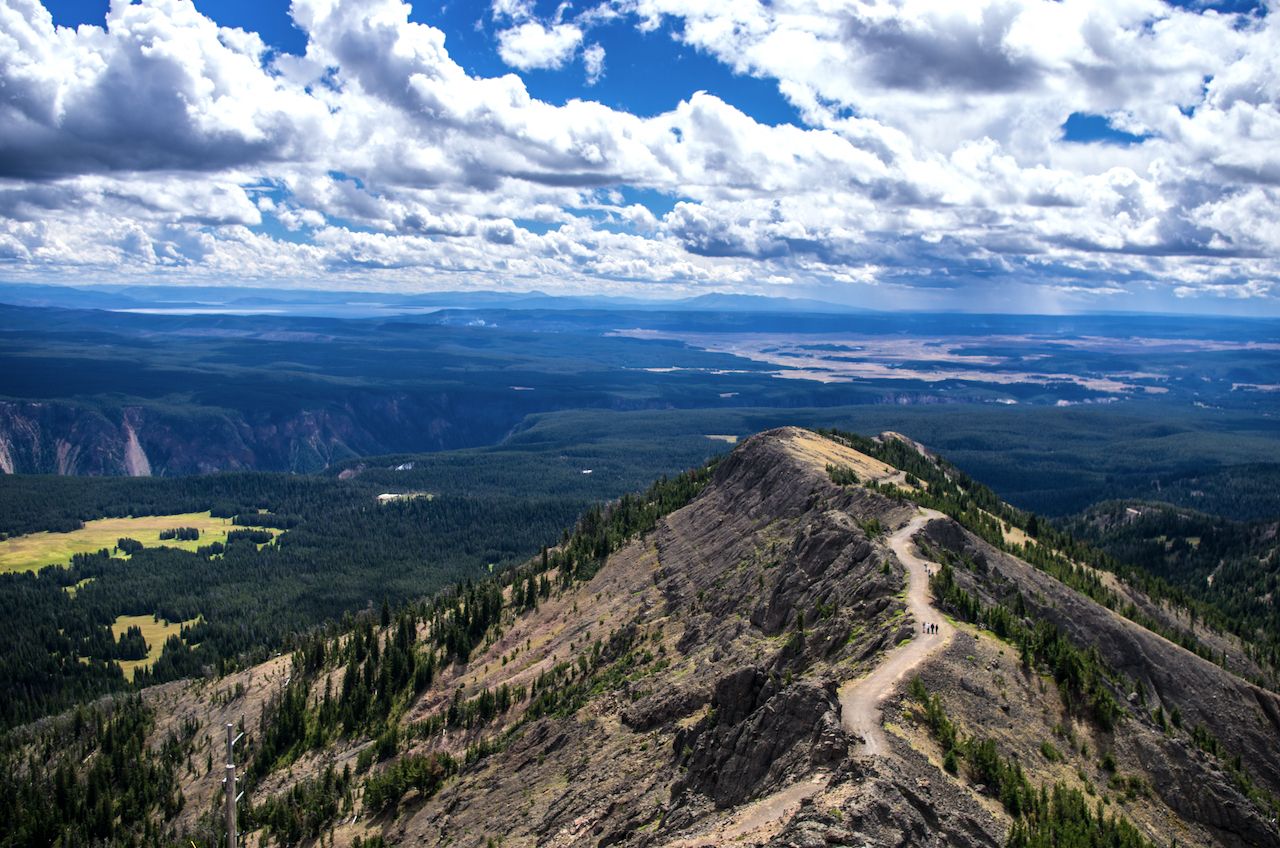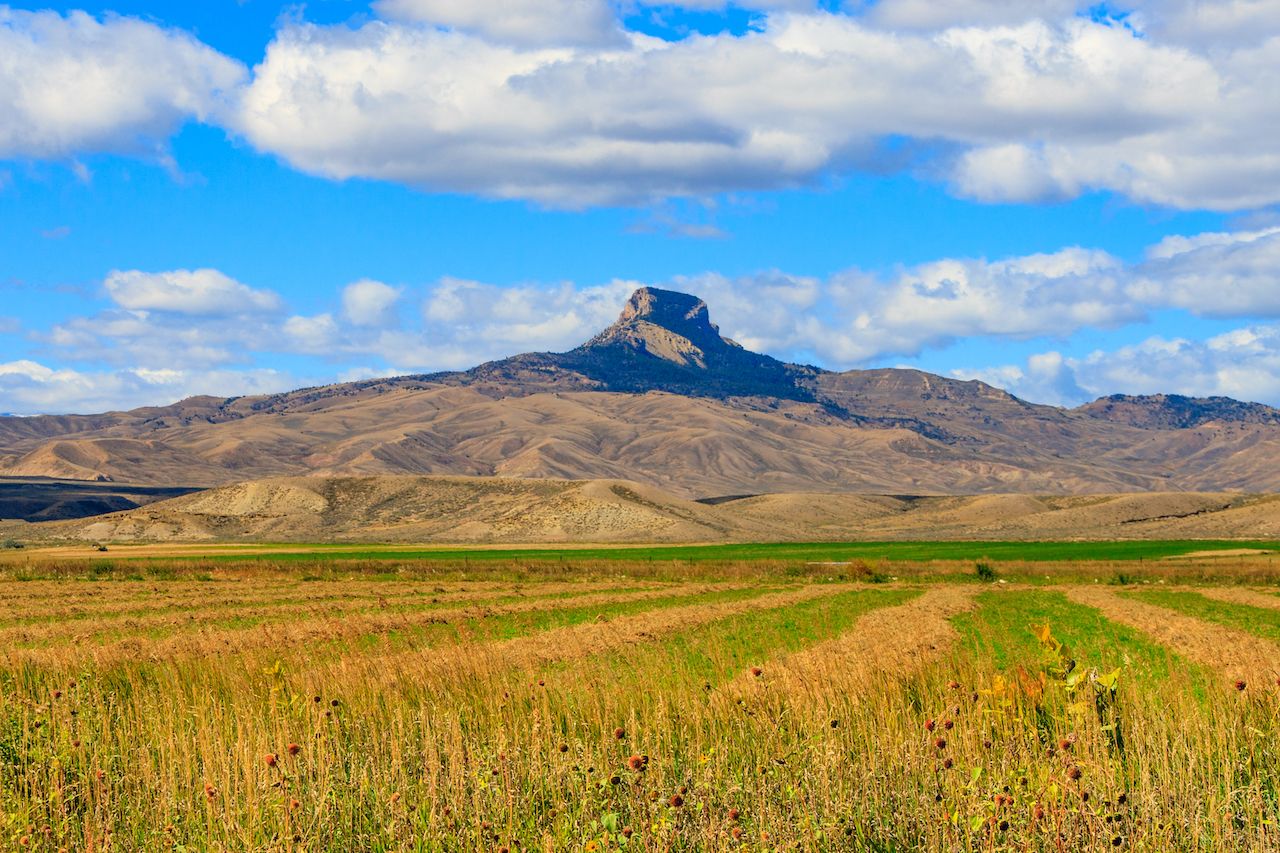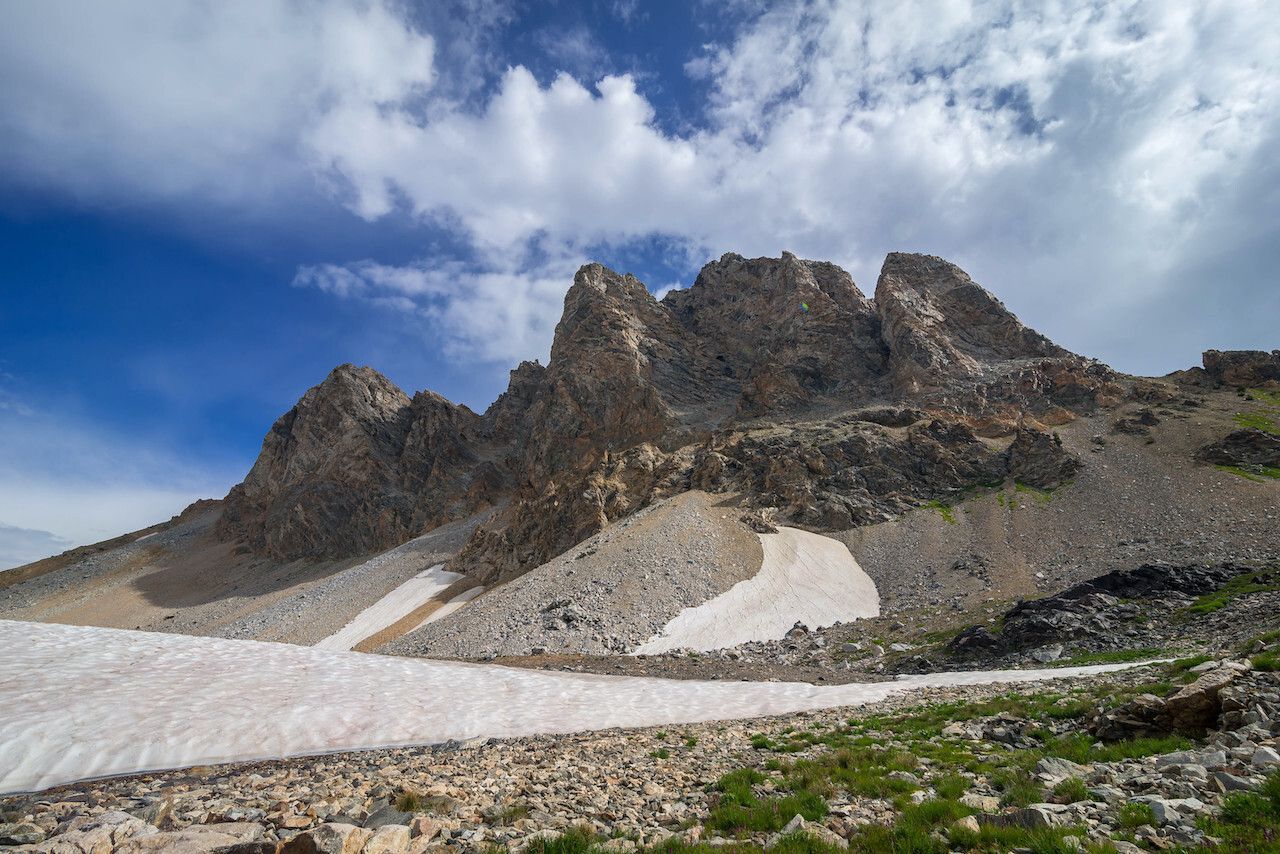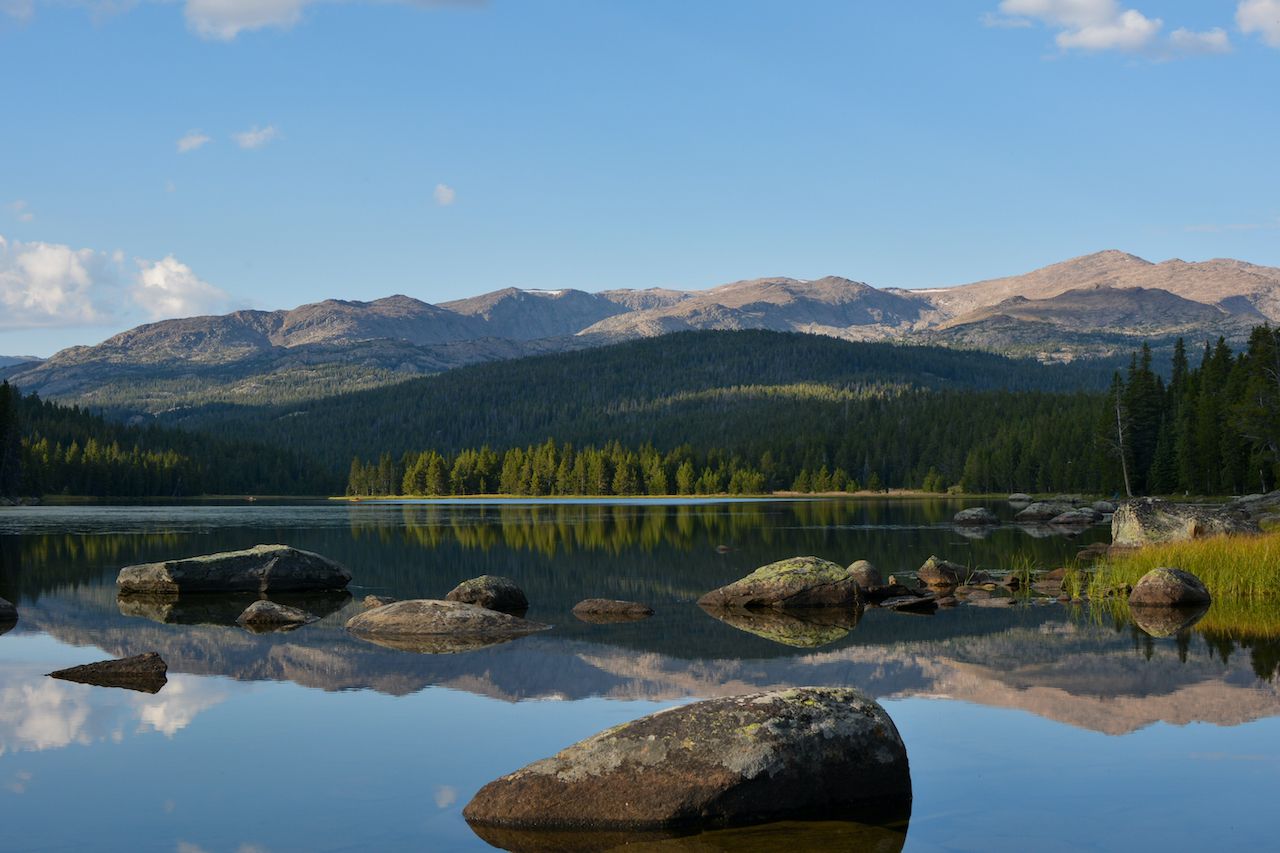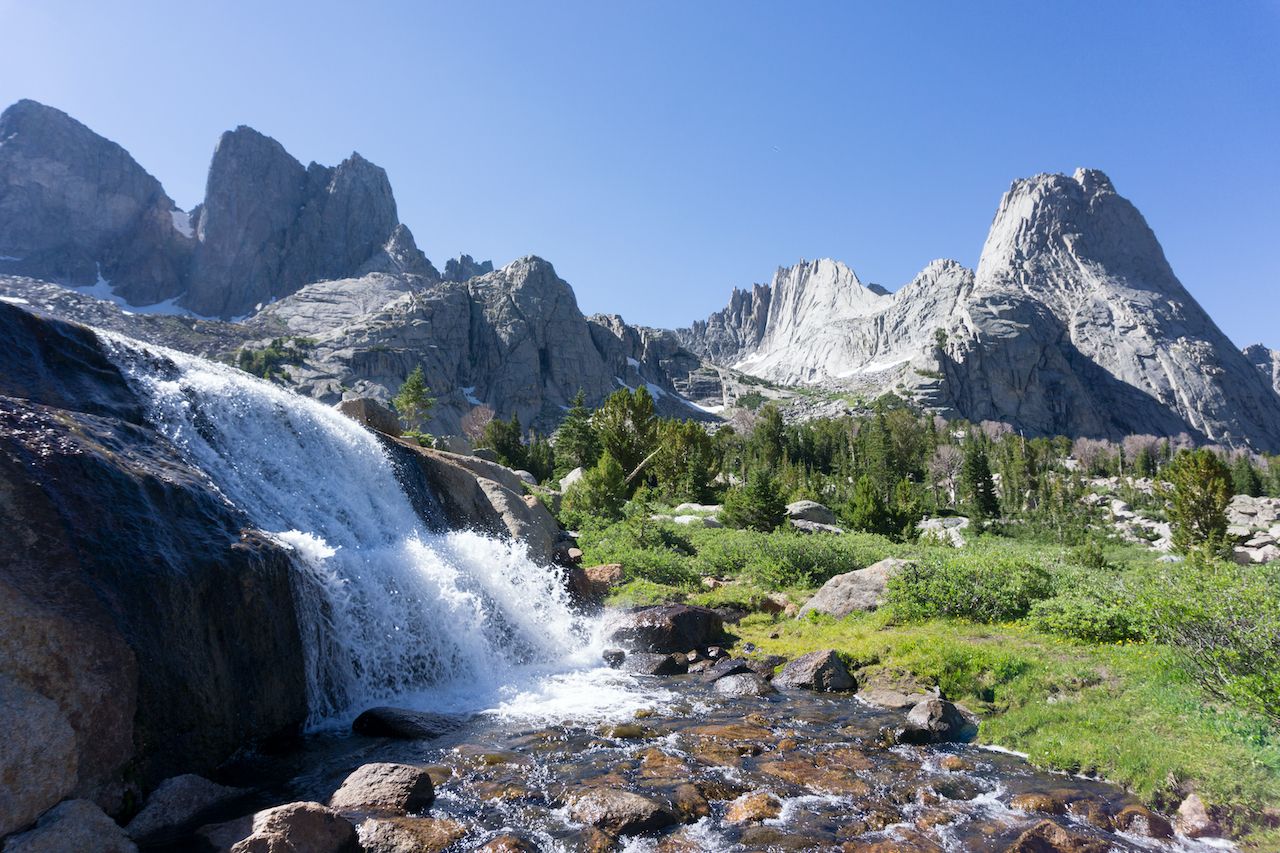Wyoming has some truly bizarre landscapes, from sand dunes that sounds like they’re singing (really!) to freakish volcanic monoliths that tower over the surrounding desert or grassland flats. It also has some of the most epic backcountry views where rows of jagged peaks bite into the sky and prairie disappears over the distant horizon. While you can drive to a few of the state’s dramatic overlooks, the best way to experience Wyoming’s landscapes is to slip on your hiking boots and hit the trail.
Here are nine of the best trails for doing a little Wyoming hiking while you’re visiting the Cowboy State, ranked from shortest to longest. While some may be quicker than others, they all have amazing views, so you’ll still get some awesome photos even if you pick one of the shorter trails.
